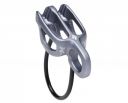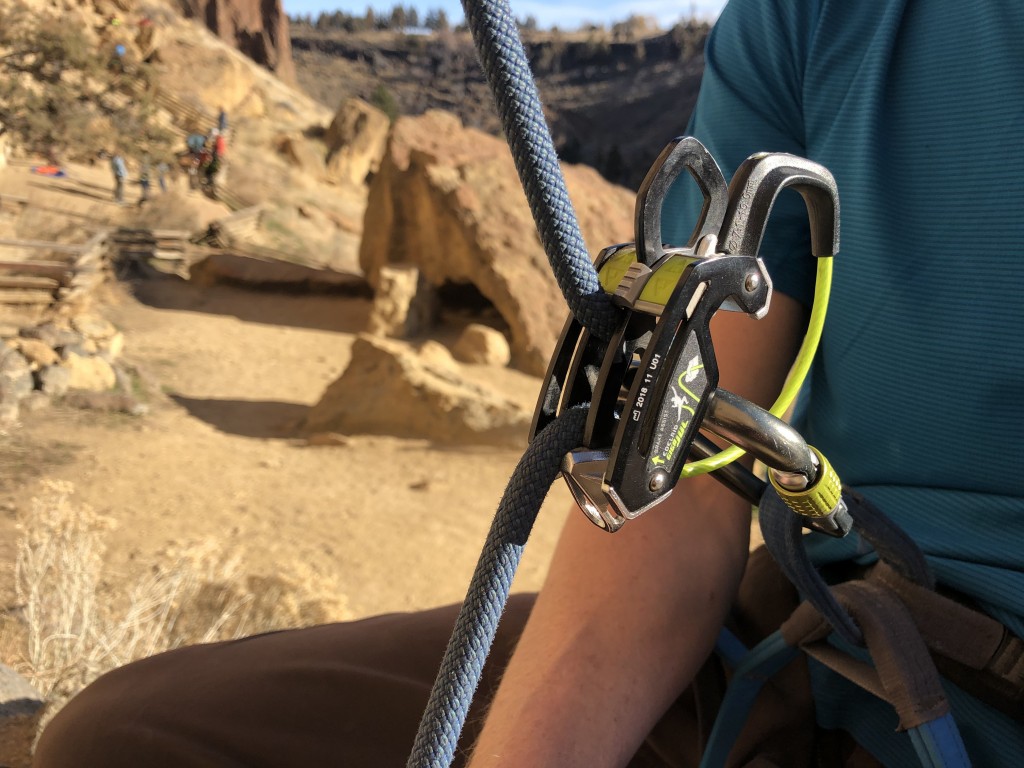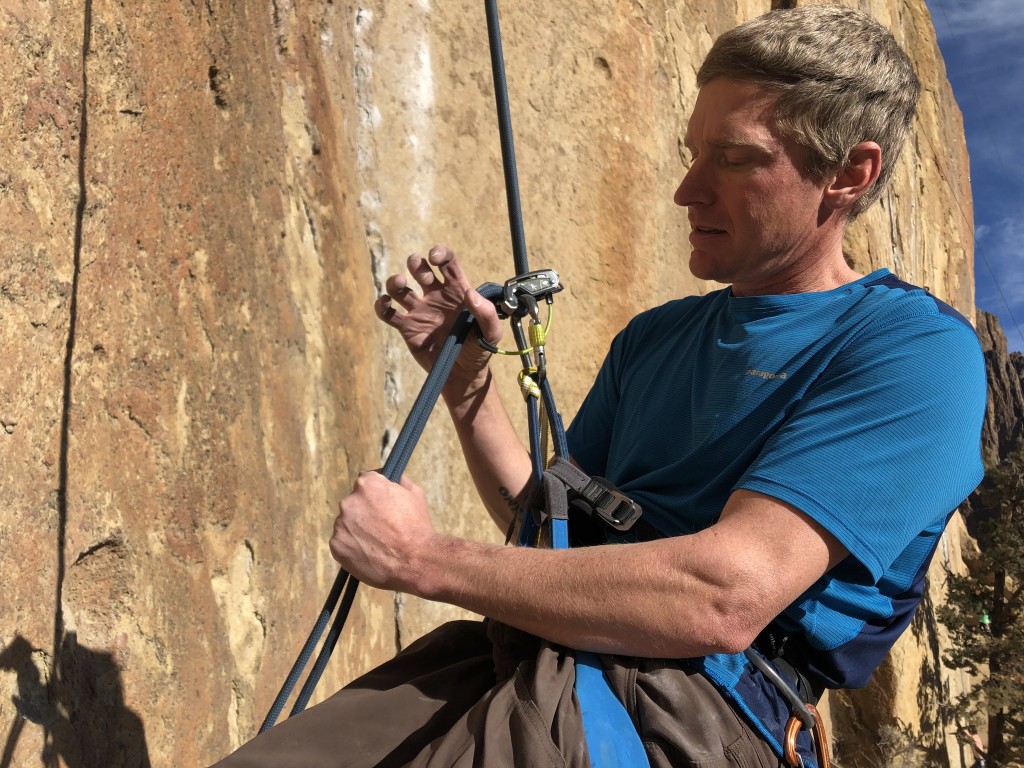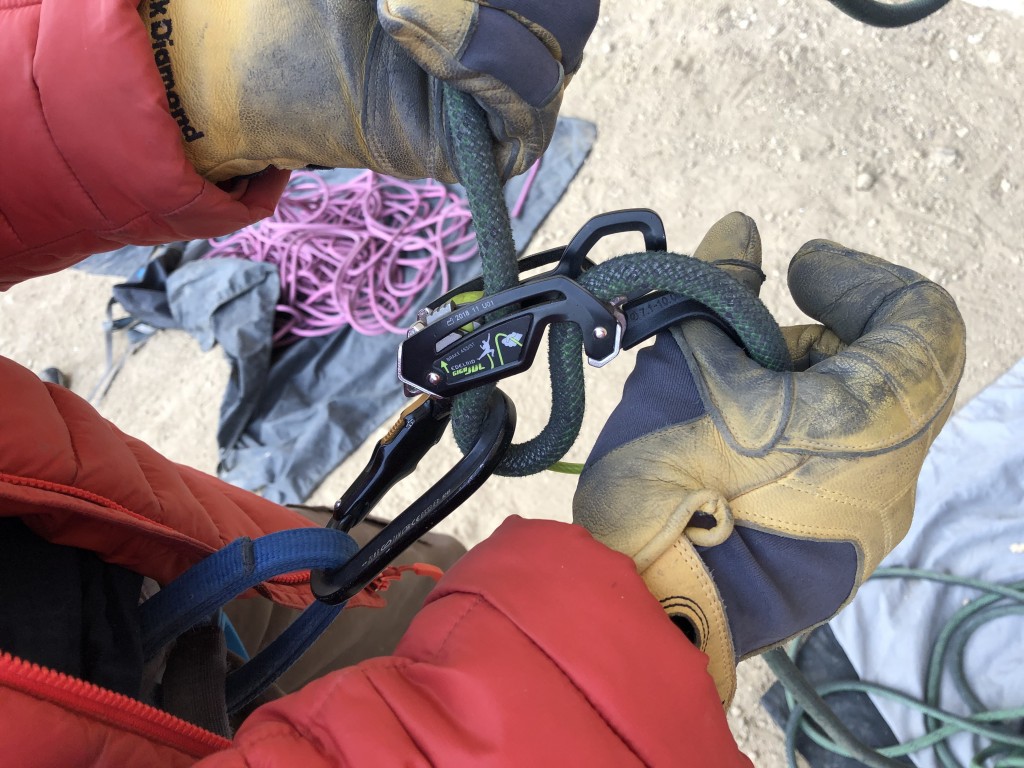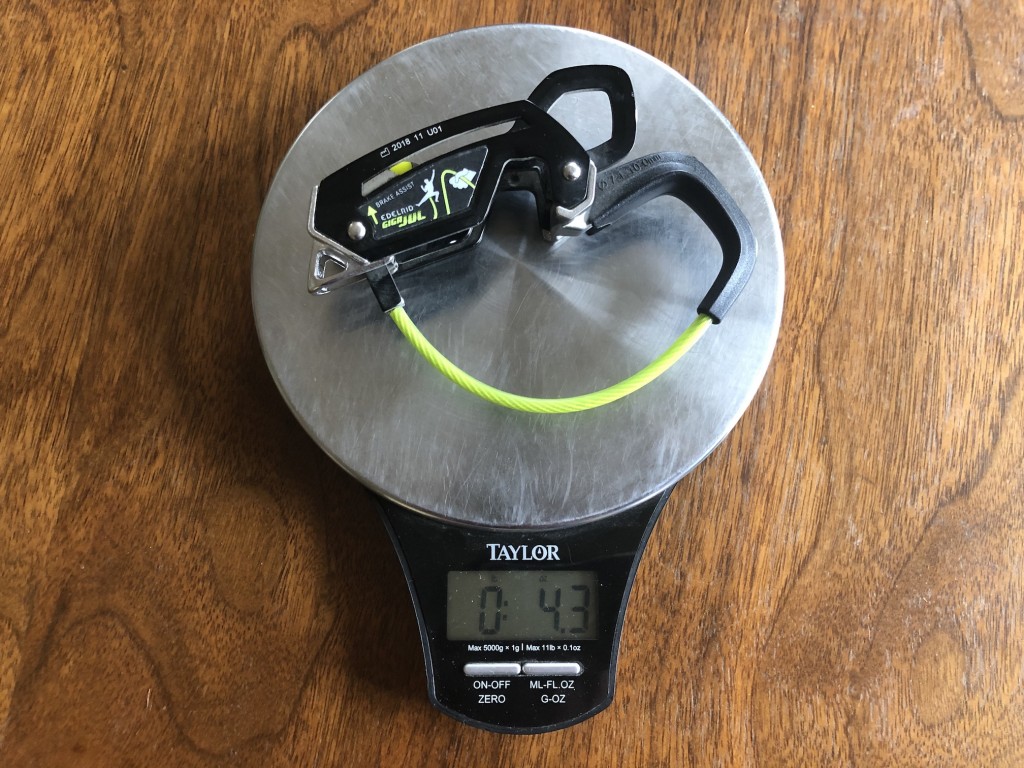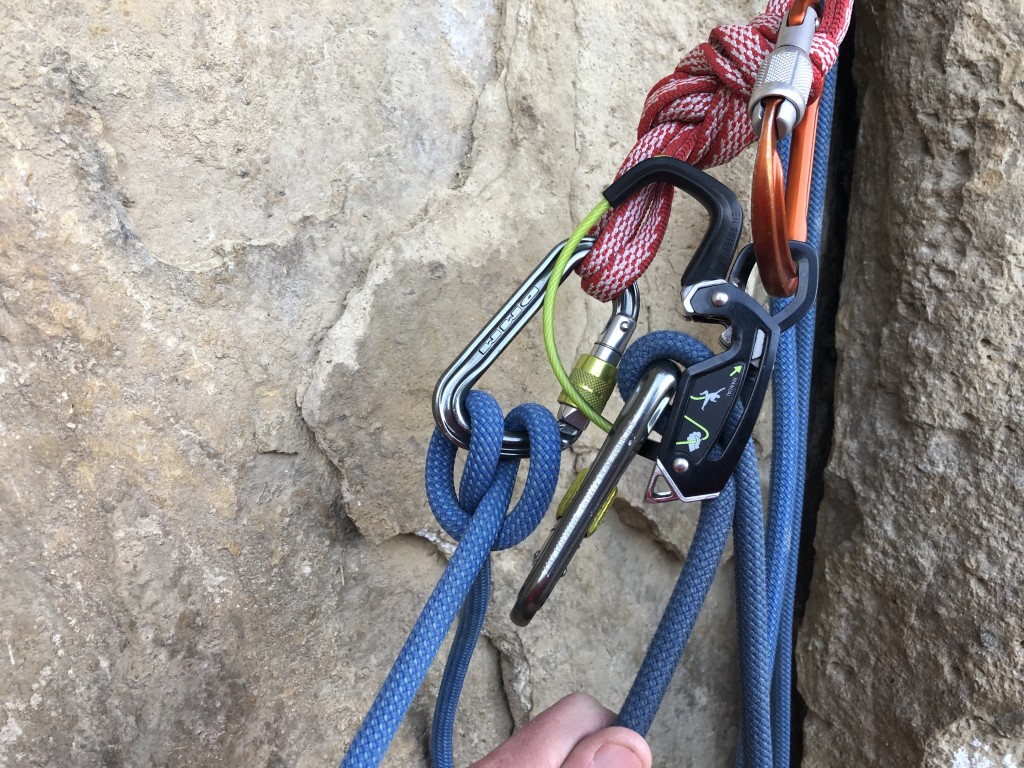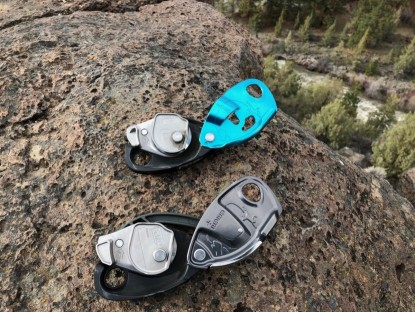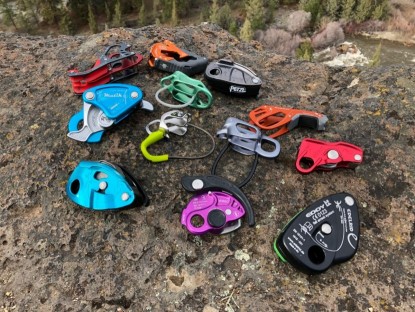Edelrid Giga Jul Review
Our Verdict
Compare to Similar Products
 This Product
Edelrid Giga Jul | |||||
|---|---|---|---|---|---|
| Awards | |||||
| Price | Check Price at Backcountry Compare at 3 sellers | Check Price at Backcountry Compare at 3 sellers | $37 List $36.95 at Amazon | $24.95 at REI Compare at 3 sellers | $21.95 at Amazon Compare at 2 sellers |
Overall Score  |
|||||
| Star Rating | |||||
| Bottom Line | A unique combination of three different belay modes in one device | Simple, durable, and optimal value for multi pitch climbs | Same as other auto-blocking tube devices with an additional feature that helps lower a follower | Low price pairs well with the basic tube style design and reliability | Smooth rope handling and a simple design all packed in to a mere two ounces |
| Rating Categories | Edelrid Giga Jul | Black Diamond ATC G... | DMM Pivot | Black Diamond ATC XP | Petzl Verso |
| Catch and Bite (30%) | |||||
| Lowering and Rappelling (30%) | |||||
| Feeding Slack (20%) | |||||
| Weight and Bulk (10%) | |||||
| Auto Block (10%) | |||||
| Specs | Edelrid Giga Jul | Black Diamond ATC G... | DMM Pivot | Black Diamond ATC XP | Petzl Verso |
| Style | Passive assisted braking | Auto-block tube | Auto-block tube | Tube style | Tube style |
| Recommended Rope Diameter (Single) | Assisted: N/A Manual: 8.6 mm - 9.1 mm |
8.9 mm - 11 mm | 8.7 mm - 11 mm | 9 mm - 11 mm | 8.5 mm - 11 mm |
| Recommended Rope Diameter (Half) | Assisted: 7.9 mm - 9.2 mm Manual: 8.6 mm - 9 mm |
8.1 mm - 11 mm | 7.3 mm - 9.2 mm | 7.7 mm - 11 mm | 7.1 mm - 9.2 mm |
| Recommended Rope Diameter (Twin) | Assisted: 7.1 mm - 8.9 mm Manual: 7.1 mm - 9.2 mm |
8.1 mm - 11 mm | 7.3 mm - 9.2 mm | 8 mm - 11 mm | 6.9 mm - 9.2 mm |
| Weight (oz) | 4.3 oz | 2.8 oz | 2.5 oz | 2.2 oz | 2 oz |
| Double Rope Rappel? | Yes | Yes | Yes | Yes | Yes |
| Belay Off Anchor? | Yes | Yes | Yes | No | No |
| Assisted Braking? | Yes, passive | No | No | No | No |
Our Analysis and Test Results
The Giga Jul takes a standard autoblocking belay device and adds a slider that provides an assisted brake function. While all functions work well, the slider is a bit confusing to learn and isn't intuitive, making this device less suitable for handing to a partner without teaching them to use it first. Also, it is much heavier than other autoblocking devices, making it less suitable for climbs with long approaches or when weight is a consideration.
Since it has three different modes of usage, loading, and using this device correctly is potentially more confusing than with many others. Please be sure to carefully learn and practice before you head to the cliffs. Our advice here is intended to help you with your purchasing decision and is not intended as instruction. Here is a link to the instruction manual published by Edelrid, and here is a brief instructional video.
Performance Comparison
Catch and Bite
Lead or top-rope belaying with the Giga Jul can be done in either assisted braking or manual mode. A slider bar along the top of the device must be positioned all the way on either end, denoting either manual or assisted mode, and then the rope must be loaded into the device in the correct manner depending on the mode, which is different for each. Luckily, there are the standard hand and climber pictures on each side of the device to denote which way to load it properly.
In manual mode, the device functions just like a standard tube and has some added friction grooves that help you catch and hold a falling climber. Compared to assisted braking modes and devices, this way of belaying requires the most effort and sustained gripping of the brake strand. In assisted braking mode, the rope is pinched between the carabiner and the device in much the same manner as almost every other passive assisted device. Although you must still hold onto the brake strand, the braking assist does most of the work, effectively locking the device when the climber falls, and easily holding their weight as they rest.
Lowering and Rappelling
The performance of the Giga Jul for lowering and rappelling is once again dependent on which mode you are using. For rappelling, we preferred using manual mode with a prusik backup, as this is far and away the smoothest way to rappel, and feels just like any other tube-style device. We most often lowered climbers in assist mode, because that is how we usually belayed them. Lowering a climber in assist mode requires keeping upward pressure on the thumb loop, which takes a bit of effort and is fairly jerky. Rappelling in assist mode is similarly effortful and jerky, and we preferred not to do it. That said, we like it as an option in case we don't have a prusik for backup.
Feeding Slack
Feeding slack in manual mode with the Giga Jul is exactly like with any other tube-style device and uses the same techniques. This is the smoothest way to feed slack, and also the least likely for a belayer to accidentally short rope their leader. In brake assist mode, feeding slack requires looping the belayer's thumb through a special thumb loop, and then hold this loop up and out from the torso, to prevent the device from locking and keep the rope feeding smoothly. With the other hand, the belayer pulls slack through the device. We like how the device is ambidextrous, so lefties can use it just as easily as righties. However, we did notice that when you pull some slack back in through the device, you take your thumb out of the loop to do so, and then must look down, away from your climber, to find the thumb loop once again.
Weight and Bulk
The Giga Jul weighs 4.3 ounces, which is almost double the weight of other auto-block belay devices designed for multi-pitching. The added toggle switch adds a little bit of weight, but the main difference is in the stainless steel inserts in high wear areas, that ensure a longer life span for the Giga Jul. The lighter auto-block devices don't have that and are sure to wear out a bit quicker, so the added weight comes with the benefit of increased durability.
Auto-Block
The Giga Jul can be clipped directly to the anchor for belaying up a second in auto-block mode. Of note is that the slider bar must be slid into manual mode for this usage, which is slightly confusing. But once in manual mode, it is set up and operated like any other auto-blocking belay device. There is slightly more friction when pulling slack through the devices compared with other “guide” style belay devices, which is a major drawback if you are going to use the device every day.
Value
The Giga Jul costs roughly the same as other passive assist belay devices, many of which do not allow for two ropes and are not ideal for multi-pitching. While it does cost a fair bit more than standard auto-block devices, we think the added expense is worth it, considering you also get assisted braking. Its increased durability also adds to the value.
Conclusion
The Edelrid Giga Jul is a true “all in one” belay device. Being able to rappel double ropes and belay in auto-block mode is a necessity for any multi-pitch belay device, but also adding in assisted braking greatly increases its value. We know many people who commonly carry a tube and a GriGri up multi-pitch climbs, just for this same versatility. With the Giga Jul, this need disappears, though the unit is considerably heavier than other similar devices on the market. It is heavy and bulky enough that we wouldn't recommend it for weight-conscious missions like hard multi-pitch routes or alpine climbing.



